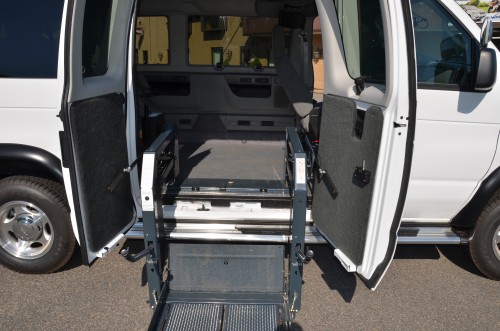Vermont Disability Grants and Funds for Wheelchair Vans
Financial Aid Resources for Handicap Vans for Vermont (VT) Residents
If you’re a resident of Vermont wondering how you’re going to afford a wheelchair van, you’ve come to the right page. We’ve gathered lots of information on resources for disability grants in your state. Whether you aspire to own a handicap van or to outfit one with accessibility conversions including: scooter or wheelchair lifts to turning automotive seating systems to adaptive driving controls and everything in between, we’ve got you covered.
Below is a compilation of the primary Vermont-based sources of disability grants and other aid for individuals. A few of the resources don’t provide grants to individuals themselves, but they will prove enormously useful in locating financial aid options for a handicap van you might not uncover yourself during research.
In addition, contact Vermont-based branches of disability specific foundations and other groups that work with people who have a disability. They often offer grants themselves or they can help you locate some to apply for.
Sources for Vermont Disability Grants and Assistance:
Department of Disabilities, Aging and Independent Living (DAIL)
DAIL is an important contact in the Vermont state government for elderly and disabled residents. They provide information, services and other assistance. Get in touch for help locating available disability grants for which you may qualify.
103 South Main Street
Weeks Building
Waterbury, VT 05671-1601
(802) 871-3350
New England Americans with Disabilities Act (ADA) Center
Vermont residents looking for disability grants to apply toward a wheelchair van should definitely contact their branch of the National Network of ADA Centers, the New England ADA Center. It strives to preserve and further the independence, self-determination, rights and quality of life of the state’s disabled population.
180-200 Portland Street
Suite 1
Boston, MA 02114
(617) 695-1225 or (800) 949-4232
ADAinfo@NewEnglandADA.org
Office of Veterans Affairs (VA), State of Vermont
Vermont’s VA is your go-to place if you’re an in-state disabled US veteran. Along with the many other types of support, services and aid offered through the VA, disability grants are available to be applied to a wheelchair van or handicapped accessibility modifications. Grants are regularly awarded to veterans who become disabled in the line of duty or as a result of VA medical services.
118 State Street
Montpelier, Vermont 05620-4401
(802) 828-3379 or (888) 666-9844
Vermont Aging and Disability Resource Center (ADRC)
ADRCs are joint efforts of the US Administration on Community Living and the Centers for Medicare and Medicaid Services. Each state has its own division, with multiple offices serving different counties. Elderly and disabled Vermont residents will find this to be an exceptionally useful resource when trying to acquire a wheelchair van. Follow the link to find your county office’s contact information.
Vermont Area Agencies on Aging (AAA)
If you’re a senior citizen living in Vermont, this is a key resource for you. Through a variety of services and support, your state’s AAA helps you remain as independent and comfortable as possible during your later years.
30 Washington St.
Barre, VT 05641
(802) 479-0531 or (800) 642-5119
info@cvaa.org
Vermont Assistive Technology Program (ATP)
Vermont’s ATP provides support to disabled state residents who require assistive technology, including handicapped-friendly transportation. They offer training, information, technical assistance and more. They also loan out some assistive technology for short-term trials. Ask about where you can get disability grants to apply toward your wheelchair van.
Vermont Developmental Disabilities Council (DDC)
The National Association of DDCs operates state-based branches in most states. This Council is available to all Vermont residents who meet the definition of a person with a developmental disability as spelled out by federal law. They work tirelessly to protect and promote a high quality of life for people with these afflictions. This includes offering individual grants to help maintain mobility and other aspects of independence.
103 South Main Street
One North, Suite 117
Waterbury VT 05671-0206
(802) 828-1310 or (888) 317-2006
vtddc@state.vt.us
Vermont Division of Vocational Rehabilitation (DVR)
Vermont’s DVR is dedicated to keeping the state’s disabled residents gainfully employed. Through a variety of hands-on approaches, the agency helps ensure you can find and keep a job. If this requires getting a handicap van, disability grants may be available to you. Search for an office location by city at the DVR website or reach the main office at:
103 South Main Steet, Weeks 1A
Waterbury, VT 05671-2303
(866) 879-6757
Vermont Statewide Independent Living Council (SILC)
Like its counterparts in all other states, the Vermont SILC is a legally mandated, nonprofit, non-governmental organization controlled by consumers. It is run by a council of 21 disabled members. It endeavors to promote the independence, self-determination and equality of persons with disabilities.
P.O. Box 56
Winooski, VT 05404
(802) 233-4908
Rehabilitation Services
Office of Rehabilitation Services
The Office of Rehabilitation Services helps people with disabilities become employed and live independently in the community. They provide a variety of programs and services to empower individuals with disabilities to prepare for, obtain and maintain employment and economic self-sufficiency.
Vocational Rehabilitation
The focus of the Vocational Rehabilitation Program is to help people with disabilities prepare for, obtain and maintain employment. Individuals who apply for this program are interested in becoming employed. If a person receives Social Security Disability Insurance (SSDI) or Supplemental Security Income (SSI) and they are interested in working, they are assumed to be eligible for this program.
Services for the Blind and Visually Impaired
The Services for the Blind and Visually Impaired offers a variety of training and adjustment services for individuals who are blind or who have significant visual impairments. The goal is to help them become independent, active, and self-sufficient members of their community. Services are available for children and adults.
Disability Determination Services
The Disability Determination Services unit determines the eligibility for children and adults with disabilities who are applying for cash benefits from the federal Social Security Administration’s programs – Social Security Disability Insurance (SSDI) and Supplemental Security Income (SSI).
Assistive Technology Access Partnership
The Office of Rehabilitation Services administers the Assistive Technology Access Partnership which can help individuals with disabilities get assistive technology devices and services.
Links
Vermont Disability Grants Handicap Funding VT
Get handicap funding such as grants, disabled loans, mobility finance options, government programs, and other funds for accessible transportation. Find the largest source of grants for the disabled to cover some or all the costs associated with funding new or used handicap vans or wheelchair van conversions. Once you’ve secured the funding for your wheelchair van, AMS Vans is happy to deliver your handicap van to Vermont or nationwide.
Disability Grants in Vermont (VT)
Vermont disability grant programs may or may not provide funding for a handicap van. Check with the local Vermont grant provider for a complete list of requirements.
Opportunities Credit Union
The Opportunities Credit Union provides affordable financing and terms for disabled people living in Vermont to purchase a wheelchair van.
How to Apply for Vermont Grants or Mobility Funding
Vermont residents in search of handicap grants, mobility financing, disabled loans, government assistance, or other disability programs to buy a wheelchair van should contact the foundations listed. We will work with all approved grants and funding resources you’ve received to get you your handicap van or accessible conversion as soon as possible. If we missed a grant program you’re familiar with, please let us know so we can add it to our list of mobility funding sources in Vermont.



